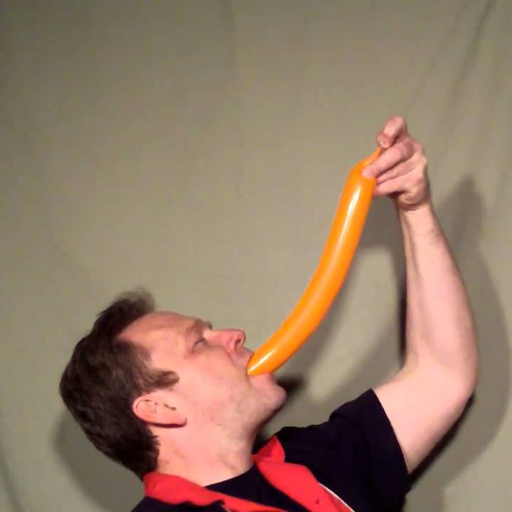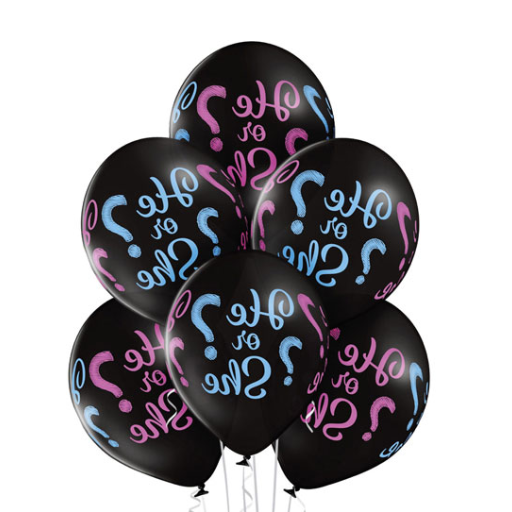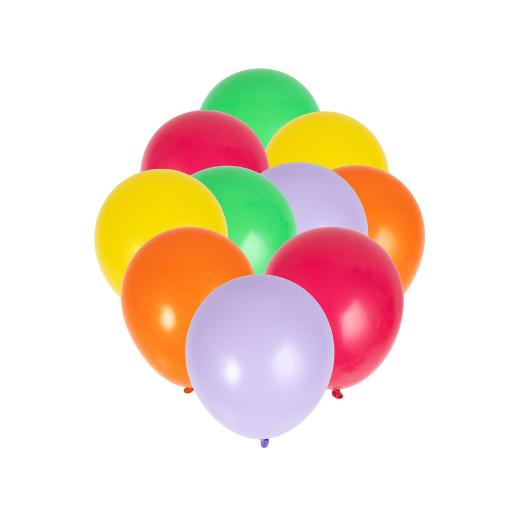The unforeseen and rather alarming occurrence of an accident involving swallowing a latex balloon cannot be swept under the rug. Though it may sound strange initially, this concern requires an immediate response from an aware and informed public. Whether it may be a child putting objects into his or her mouth as a natural way of exploring his or her environment or an unfortunate circumstance befalling an adult, familiarity with the risks involved and what to do in such a situation is essential. This article reviews the scenario of swallowing a latex balloon, the possible danger it poses to health, and the appropriate procedures in ensuring the matter is dealt with effectively. By the close of it, there should be a step-by-step procedure to react swiftly and safely to the incident, again, ensuring a good outcome.
Understanding Swallowed Objects

When a latex balloon is swallowed, the top dangers involve choking and perhaps airway obstruction or an arrest of the digestive tract. The body does not break down latex easily and can become obstructed; in those situations, if the object is in the airway or digestive system, that person can be in great danger as the person fights to either breathe or digest. They form an obstruction in placing landmarks for the flow of breath and need to be treated medically and on an emergency basis. Immediate treatment must be given.
When signs of distress, such as coughing, gagging, or shortness of breath, are not present in the individual, they should be observed closely while trying to reach a healthcare professional for advice. If he or she is choking or struggling to breathe, the Heimlich procedure must be performed before or concurrently with calling emergency services. Always seek professional medical evaluation, as even small fragments of latex may cause delayed complications to the digestive system.
What Happens If You Swallow a Foreign Object?
The consequences that a person faces from swallowing foreign materials are generally related to the size, shape, and material of the foreign object. Usually, small, smooth objects such as coins or buttons traverse the gastrointestinal tract without causing any significant damage, emerging within 1 to 3 days through natural means. However, irregular or sharp objects present greater risks of gastrointestinal tract perforation, which can result in severe medical complications such as infections or internal hemorrhaging.
In 2023, the National Institutes of Health (NIH) stated that 80-90% of foreign objects swallowed pass safely through the digestive tract without any intervention. However, about 10-20% of foreign objects may require removal of medical instruments, such as an endoscope, while 1% or less of the cases need surgical intervention. Most incidents occur in at-risk groups of children between 6 months and 3 years because of their exploratory behavior.
Batteries and magnets, among other things, require immediate medical attention since they can cause potentially fatal injuries. Button batteries can burn tissue in the esophagus or stomach within hours by leaking corrosive chemicals. The American Association of Poison Control Centers (AAPCC) reported an unprecedented increase in battery ingestion cases, with over 3,400 reported in the United States alone in 2022. On the other hand, multiple swallowed magnets pose a very similar threat by attracting each other with intestinal walls sandwiched between them, causing obstructions, perforations, or necrosis.
Close symptom monitoring after the ingestion of a foreign object is critical. Some symptoms, such as abdominal pain, vomiting, difficulty swallowing, and blood in stool, are certain signs of an underlying complication. Such respective symptoms should warrant immediate medical attention. This is also the case in instances involving the ingestion of high-risk foreign objects, such as batteries, sharp items, or magnets.
Common Swallowed Objects: Focus on Balloons
|
Key Point |
Details |
|---|---|
|
Leading Cause |
Balloons cause most toy-related choking deaths. |
|
High-Risk Age |
Children under 8 years are most vulnerable. |
|
Common Accidents |
Inhaling while inflating or chewing balloons. |
|
Hazardous Pieces |
Broken balloons mold to the throat, block breathing. |
|
Removal Difficulty |
The slippery texture makes removal challenging. |
|
Prevention |
Supervise children and discard broken balloons. |
|
Safer Alternatives |
Mylar balloons are less risky but need care. |
|
First Aid |
Learn CPR and first aid for emergencies. |
How to Identify a Swallowed Object
Identifying a swallowed object can sometimes be complex, especially in children or those unable to articulate their discomfort. Observing sure signs and symptoms or gathering contextual information may help determine whether a foreign object has been swallowed. Some of the main pieces of information to look out for, followed by a list of possible signs, are:
Detailed Signs and Symptoms
- Visible Discomfort
The person may appear to be in distress or show strange behavior, such as restlessness or crying without any discernible reason.
- Gagging or Choking
This is when one has difficulty breathing, keeps on gagging, or has recurrent coughing, which could be a sign of an object in the throat or airway.
- Drooling
Excess saliva may be produced if the object is stuck in the esophagus, preventing saliva from passing downward normally.
- Abdominal Pain or Swelling
Tenderness or pain may be felt in the abdominal area, suggesting that the object has caused obstruction or irritation farther down the digestive tract.
- Vomiting or Nausea
Vomiting or nausea occurring repeatedly, especially when no other sickness is present, may be a sign of trouble in digesting or transporting a foreign object.
Signs of an Object Upon Being Swallowed
Here is a short list of five more important signs to keep in mind for assessing whether a foreign object has been swallowed:
- Gagging, choking, or coughing.
- Excessive drooling or inability to swallow effectively.
- Sudden abdominal pain or discomfort with a sense of internal tightness.
- Vomiting or bleeding in the vomit or stool.
- Refusal to eat or drink and unexplained weight loss.
Signs and symptoms should be monitored for early detection. If an object is suspected of having been swallowed, medical attention should be sought as soon as possible to address the evolving complications and minimize health consequences.
Symptoms and Risks of Swallowing a Balloon

The passing of a balloon produces many alarming symptoms, health hazards being among them.
- Choking Hazards: Balloons can block the airway and cause breathing difficulty or choking.
- Intestinal Blockage: Once a balloon is swallowed, it obstructs the intestinal tract, causing severe pain and possible complications.
- Inflation Risks: Once ingested, a partially inflated balloon can expand inside and increase the danger of blockage in an airway or an intestinal tract.
- Toxic Materials: Some balloons are made from substances that irritate the stomach lining or release harmful chemicals.
Immediate medical attention is required if it is suspected that somebody has ingested a balloon, so that life-threatening complications may be averted.
Signs That Someone Is Choking
Other signs of choking include an inability to speak, coughing or wheezing sounds, holding the throat clumsily, panic, or turning blue due to lack of oxygen, resulting in an emergency that requires immediate intervention.
Potential Complications from Swallowed Latex Balloons
|
Key Point |
Details |
|---|---|
|
Choking Hazard |
Balloons block airways, causing suffocation. |
|
Breathing Obstruction |
Balloons mold to the throat and block airflow. |
|
Difficult Removal |
Slippery texture complicates extraction. |
|
Lung Aspiration |
Pieces can enter the lungs, causing blockage. |
|
Fatal Outcomes |
The leading cause of suffocation in children. |
|
Digestive Blockage |
May obstruct the intestines if swallowed. |
|
Emergency Response |
Requires immediate medical attention. |
When to Seek Medical Attention
In a medical emergency where I suspect a patient has swallowed a latex balloon or is choking, I immediately seek medical treatment. Time becomes essential in these situations, as delayed intervention could lead to further complications or even loss of life. Recognizing an Emergency means watching for signs such as struggling to breathe, constant coughing, or color change from normal to pale or cyanosed, with a little clock ticking in my head saying: “This person requires urgent attention.”
Immediate Actions to Take

The following steps may be taken if a person swallows a latex balloon and begins to choke without any delay:
- Call Emergency Services – Dial the emergency number for your locality immediately.
- Back Blows and Abdominal Thrusts – If they truly are choking and cannot breathe, use the back blows and the abdominal thrusts (Heimlich maneuver) to try and get the balloon out.
- Encourage Coughing- Encourage them to continue coughing to expel the foreign object.
- Do Not Blindly Try to Grab the Object- This is dangerous since you may push it further and worsen the obstruction.
- Stay Calm and Monitor- Get the person calmed down and monitor the condition until help arrives.
Always keep safety first and ensure help is coming as soon as possible.
Detailed Steps to Help Someone Who Is Choking
There are five significant steps to follow to help a choking person:
- Assess the Situation
- Recognize whether the airway is wholly or partially obstructed.
- Signs of complete obstruction are an inability to speak or breathe and sometimes high-pitched wheezing.
- The person may cough; hence, they may have a partial obstruction. But stay with them closely.
- Call for Emergency Help
- Call immediately for emergency services if the choking situation becomes severe.
- Alert them to the situation and follow any instructions from the telephone operator.
- Deliver Back Blows
- Stand essentially to one side and slightly behind.
- Supporting their chest with one hand, lean the person forward, so gravity may assist in dislodging the foreign material.
- With the heel of the other hand, hit the back forcefully five times between the shoulder blades.
- Perform Abdominal Thrusts (Heimlich Maneuver)
- Stand behind the patient or victim, wrapping your arms around their waist.
- Clinch your fist with one hand and place it slightly above the person’s navel but below the ribcage.
- Grab your fist with the other hand and administer several quick upward thrusts, up to a count of five.
- Repeat If Required
- Alternate with five back blows and five abdominal thrusts until the object is expelled or the person starts to breathe normally.
- If the person becomes unconscious, start CPR and search for the item in the mouth if visible.
Act swiftly but stay calm; the proper execution of these steps can help save a life in these choking emergencies.
Coughing Techniques for Expelling Foreign Objects
|
Key Point |
Details |
|---|---|
|
Forceful Coughing |
Encourages natural expulsion of the object. |
|
Back Blows |
Strike between the shoulder blades with the heel of the hand. |
|
Abdominal Thrusts |
Quick upward thrusts above the navel. |
|
Alternate Techniques |
Combine back blows and abdominal thrusts. |
|
Self-Heimlich Maneuver |
Use a fist and a hard surface for self-thrusts. |
|
Chest Thrusts |
For pregnant or large individuals. |
|
Avoid Blind Sweeps |
Prevent pushing objects deeper into the airway. |
|
Seek Emergency Help |
Call 911 if techniques fail. |
What to Do if You Swallowed Something
|
Key Point |
Details |
|---|---|
|
Stay Calm |
Most objects pass without harm. |
|
Encourage Coughing |
Helps dislodge partially stuck objects. |
|
Avoid Blind Sweeps |
Prevent pushing the object deeper. |
|
Seek Emergency Help |
Call 911 if choking or breathing is blocked. |
|
See a Doctor |
For sharp, toxic, or stuck objects. |
|
Check for Symptoms |
Look for pain, vomiting, or difficulty swallowing. |
|
Monitor Stools |
Ensure the object passes within seven days. |
|
Avoid Heimlich |
Unless the airway is completely blocked. |
Diagnosis and Treatment Options

If you believe a foreign body was swallowed, you must analyze the situation promptly and take proper action. Complaints of pain, discomfort, or slight difficulty in swallowing and coughing are typical symptoms of a foreign body. However, if symptoms of airway obstruction occur, the pain is severe, or the patient cannot swallow normally, immediate medical care must be sought.
The doctor may decide to observe a minor case, for example, a small smooth object that causes no symptoms, to determine if it will pass away naturally on its own. It will be necessary to locate and safely get rid of sharp, large, or complicated foreign objects, probably involving the help of imaging techniques, such as X-rays and endoscopy. Emergency intervention is warranted for any object that is blocked in the airway or upper digestive tract and has the potential for injury or obstruction. Always adhere to your healthcare provider’s instructions and never ignore possibly severe signs.
Using X-Rays to Identify Swallowed Objects
X-rays are one of the more effective methods for discovering ingested foreign objects and assessing their location and threat. They are most helpful in detecting metallic objects, bone fragments, or any material considered radiopaque (not permitting distinction by X-ray beams). According to the latest medical insights, about 80% of swallowed foreign objects pose no threat and pass naturally through the digestive system. Immediate imaging is more important for sharp, large, or hazardous objects.
The modern X-ray technology offers obvious visualization, allowing the healthcare practitioner to precisely assess whether the foreign body is located in the airway, esophagus, stomach, or the lower portions of the intestine. Dental X-rays, for example, help find whether a tiny metallic object was ingested inadvertently during a dental procedure. It is also noted that pediatric patients often get their coins and toy parts identified with X-rays, with radiographs having a 90% diagnostic accuracy for such objects. Technological advancements in imaging have also reduced radiation exposure and secured patient safety.
In times of emergency, when X-rays cannot locate the location of the foreign body, supplementary imaging can aid in the area with CT scan or endoscopy, providing views of the soft tissue necessary for plastic, wooden, and several other non-metallic foreign bodies. Likewise, the integration of AI-assisted imaging is gaining ground, thus promising to fast-track object detection and enhance accuracy in complex cases. Once the X-ray and allied techniques have been put to good use, timely intervention can be guaranteed, reducing complications and improving patient outcomes.
Medical Interventions for Swallowed Balloons
| Key Point | Details |
|---|---|
|
Initial Assessment |
Check for choking, pain, or breathing issues. |
|
X-Ray or Imaging |
Used to locate a balloon in the digestive tract. |
|
Endoscopy |
A common method to remove stuck balloons. |
|
Surgical Removal |
For severe cases or intestinal blockages. |
|
Monitor Symptoms |
Watch for pain, vomiting, or blood in the stools. |
|
Avoid Emetics |
Not recommended for balloon ingestion. |
|
Specialist Consultation |
Required for complex or high-risk cases. |
|
Emergency Action |
Immediate care for airway obstruction. |
Aftercare and Monitoring for Swallowed Foreign Bodies
Proper aftercare and continuous monitoring are essential to keeping the person safe and helping their recovery after ingesting a foreign object. Below are five main aftercare factors with further points on monitoring:
- Periodic Imaging Procedures
- Periodic X-rays or advanced imaging studies, such as computed tomography (CT), can be carried out to create a monitoring system for the progression of the object and possible complications.
- The frequency of imaging studies may vary depending on the object’s size, material, and anatomical site.
- Observation for Symptoms
- Observe abdominal pain, vomiting, blood in the stool, or difficulty in swallowing, as they might be signs of obstruction or perforation.
- Make an accurate documentation of aggravation or regression of symptoms without any delay for further intervention.
- Dietary Adjustments
- A soft diet may be given as it is the least irritating to the bowel.
- Restrict any foods that might aggravate symptoms or delay the passage of an object, e.g., fiber in some cases.
- Hydration and Laxatives
- Encourage adequate fluid intake to facilitate the passage of a foreign body.
- Use laxatives only when indicated and when their benefits outweigh the risks, preferably to support movement without injury to the mucosa.
- Periodic Follow-Ups
- Arrange periodic follow-ups in any case to evaluate the patient’s general condition in recovery and allow the clinician to look for latent complications, particularly if symptoms persist while the object is in the GI tract.
- Blood investigations could have been used to look for infectious complications or lesions in the mucosa, possibly caused by materials that were sharp or difficult for the body to dissolve.
Following these aftercare and monitoring protocols, medical teams will be able to manage the patient’s condition intensively, decreasing potential complications and ensuring rapid recovery.
References
-
The Royal Children’s Hospital Melbourne: This source provides detailed guidance on symptoms, treatment, and when to seek medical attention for swallowed foreign objects.
-
eMedicineHealth: A comprehensive article covering first aid, symptoms, diagnosis, and treatment options for swallowed objects.
-
PubMed Central (PMC): A scholarly article “Swallowed Foreign Bodies in Adults” discusses clinical approaches, emergency procedures, and treatment protocols.
Frequently Asked Questions (FAQ)
What should I do if my child is choking after accidentally swallowing a piece of a balloon?
If your child is choking after swallowing a piece of a balloon, it’s crucial to act quickly. First, assess their breathing; their airway may be blocked if they cannot breathe or make any sounds. The Heimlich maneuver, or abdominal thrusts, is often recommended for older children and adults, while back blows may be suitable for infants and toddlers. If the blockage does not clear, it’s essential to call 911 or take them to the emergency department immediately. Sometimes, the object may need to be removed by a doctor, possibly through endoscopy. Always watch small objects around children under 6, as their natural curiosity can lead to dangerous situations.
What are the risks if a balloon gets stuck in the esophagus?
A balloon getting stuck in the esophagus can lead to several complications. The object may cause a blockage, preventing food from passing through the digestive tract and potentially leading to difficulty swallowing or breathing. In severe cases, this blockage can cause the child to wheeze or exhibit signs of distress. It’s essential to seek immediate medical attention, as the object may need removal to prevent further complications. If left untreated, a stuck object can lead to more serious issues, including perforation of the esophagus or infections. Constantly monitor young children closely, as they may be unable to communicate their discomfort effectively.
What do I do if I suspect my toddler swallowed button batteries?
If you suspect your toddler has swallowed button batteries, it’s considered a medical emergency. These batteries can cause severe internal damage, particularly if lodged in the esophagus. Immediately call 911 or take your child to the nearest emergency department. Do not induce vomiting, as this may cause further injury. The doctor may need to perform an endoscopy to remove the battery safely. Always keep button batteries out of reach of infants and toddlers to prevent such accidents, as they can be particularly dangerous if ingested.
How can I tell if my child may have swallowed something dangerous?
If you think your child has swallowed something dangerous, watch for signs such as trouble swallowing, difficulty breathing, or unusual behavior. A blocked airway is a significant concern; if your child cannot speak or cough, they may be choking. Look for any signs of distress, such as wheezing or changes in skin color. If the object may be sharp or large, seeking medical help is crucial. Children under 6 are particularly prone to swallowing small objects due to their natural curiosity, so keeping hazardous items out of reach is essential. Always consult a pediatrician if you have concerns about your child’s health.









